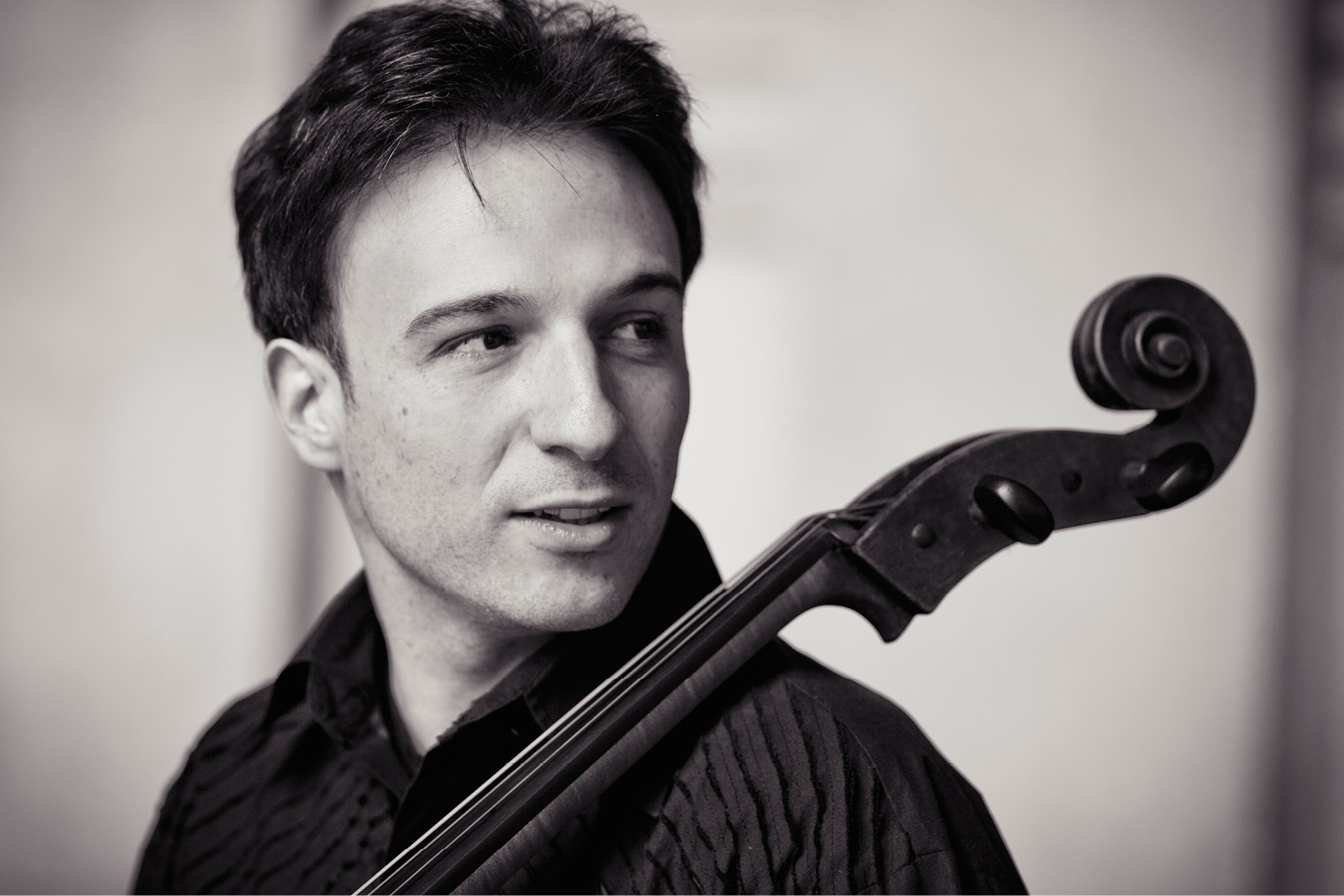With this concert’s three works all having somewhat dark backgrounds, one would think the audience would leave the concert in melancholy. Happily, such was not the case, for the Canberra Symphony Orchestra, under its chief conductor and artistic director, Dr Nicholas Milton, gave a brilliant and memorable performance.
 Umberto Clerici. Photo © Laura Stanca
Umberto Clerici. Photo © Laura Stanca
As well, there was a new sound from the orchestra. The cellos and second violins swapped places and the six double basses stood sentinel on risers at the rear of the ensemble, behind the woodwinds. These changes gave the orchestra a fuller, richer sound, and the basses, being up the back with large wooden panels behind them acting as an additional soundboard, gave a very solid foundation to the ensemble overall.
Finnish composer, Jean Sibelius, wrote Finlandia in 1899. Finland, then, was in the grip of Russian oppression and perhaps Sibelius was in a mood of rebellion and protest, writing a piece that became something of a de facto national anthem, popular not only in Finland, but also internationally. The Russian authorities banned its performance in Finland for around six years.
Right from the solid, confident opening fanfare from the CSO’s brass, it was clear the orchestra was in fine form. Milton’s usual flamboyant style called for absolute precision from every instrument and they responded magnificently. He took the allegro section at a fine clip and the orchestra was crystal clear, giving strong definition to every note and with the tutti in perfect balance. In the very familiar ‘Finlandia Hymn’ – not a Finnish folk song as is often thought, and for English-speaking countries best known as Be Still My Soul – the strings created a very real sense of peace, calm and even resolution.
Then chamber and orchestral cellist, Umberto Clerici, who is Principal Cello with the Sydney Symphony Orchestra, joined the CSO as soloist for Edward Elgar’s Cello Concerto in E Minor, Op. 85. Elgar was about 62 years of age when he wrote this work in 1919, just after World War I. Although jubilant after winning the war to end all wars, Britain was in clean-up mode and Elgar was starting to feel the pinch of age and the threat of young blood eagerly elbowing their way into the music scene; he was probably feeling a bit redundant. The Cello Concerto is a dark and brooding piece, often at slower tempi, and with only the occasional stretches at allegro. It is quite different to many of Elgar’s other works, too, perhaps underscoring the fact that it was his last major work, even though he was still to live another 15 years or so.
In his brilliant performance of this quite difficult work, Clerici coaxed an extraordinary range of tones and moods from his instrument. Through it all, Clerici kept in close eye contact with both Milton and concertmaster, Kirsten Williams. There were many times when precision of entries was paramount – he got every one of them effortlessly. Behind Clerici was an ensemble at one with the soloist, finely nuanced to his every tone and mood, and in superb balance and support.
The audience refused to let Clerici leave without an encore and he obliged with a piece for solo cello by Catalan cellist and composer, Gaspar Cassadó i Moreu, the Intermezzo e Danza Finale from his Suite for Cello, which he had dedicated to his teacher, Pablo Casals. It’s a complex piece, featuring flamenco influences in pizzicati and rhythms, an air of Spanish mystery and even a hint of Bach. Clerici well and truly captured his audience with this work.
To conclude the concert was Tchaikovsky’s Symphony No 6 in B minor, Op. 74, “Pathétique”. (Tchaikovsky had given it a Russian nickname, meaning “passionate”. “Pathétique” was a French mistranslation.) There are all sorts of theories as to what lies behind this work, even that it was Tchaikovsky’s suicide note. But Tchaikovsky was proud of his Sixth Symphony. Tragically, he was to die just nine days after conducting its premiere performance in St Petersburg in 1893. For all its symphonic structure, it is more a programmatic piece. Scholars have drawn similarities between the Sixth and an abandoned earlier work, which Tchaikovsky outlined as: “The ultimate essence … is Life. First part – all impulse, passion, confidence, thirst for activity … Second part love: third disappointments; fourth ends dying away”.
To some extent, the work belies that outline, for, the third movement, marked allegro molto vivace gives an impression of anything but “disappointments”. In fact, it was so joyous and triumphant that the CSO’s full-house audience burst into spontaneous applause. But the fourth certainly lived up to its descriptor, the orchestra fading away to nothing and Milton holding the silence for a goodly 10 or 15 seconds before the first tentative applause began.
It is not fair to single out individual players, because every player in the CSO gave their all in this concert. But towards the end of the first movement of the Tchaikovsky, clarinettist Alan Vivian and tympanist Andrew Heron engaged in a simply luscious dialogue of great sensitivity. And, in the Elgar, third movement, there was a sequence in which soloist and cellos played in perfect unison even though neither could see the other.
This was an enthralling concert of brilliant music-making and proved that the Canberra Symphony Orchestra would easily hold its own with any other Australian band.











Comments
Log in to join the conversation.